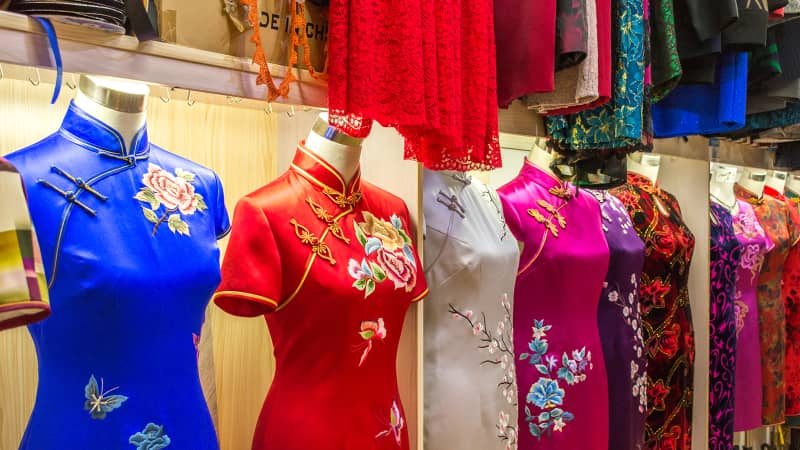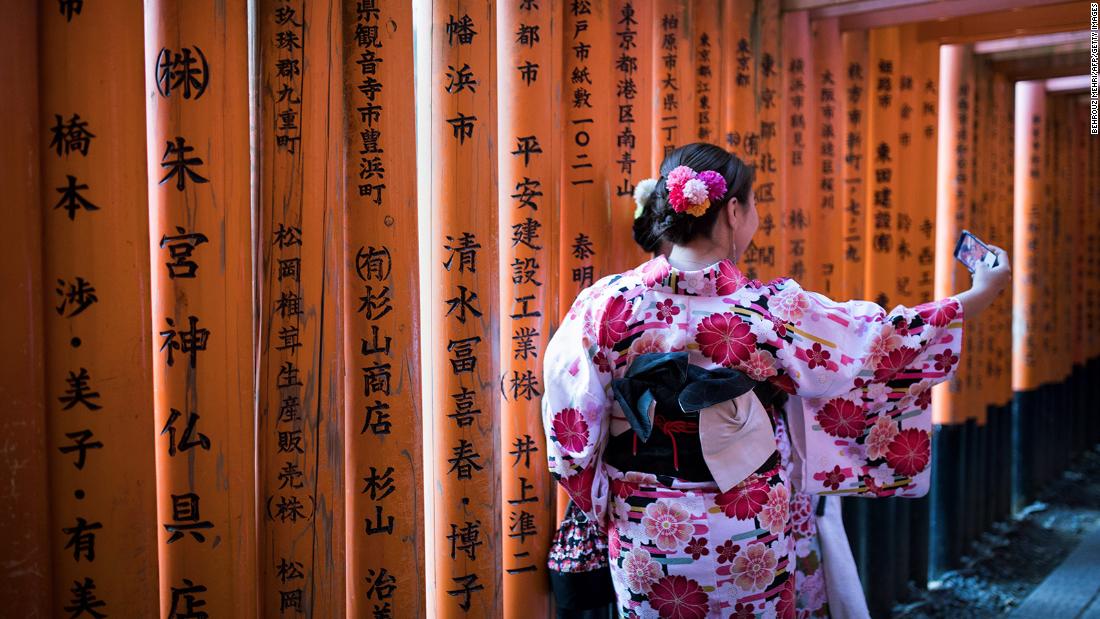(CNN) — Stepping into Pandora Cheng’s qipao rental store in central Hong Kong is like stepping back in time. A brown leather Chesterfield sofa sits in one corner beside a gramophone, opposite row-upon-row of tailor-made qipaos, the traditional high-neck Chinese dress.
Cheng offers tourists in Hong Kong “dress-up experiences” that use fashion as a way to explore culture. She was inspired by geisha makeovers in Japan and other cultural dress activities she has taken part in on her travels.
“I think if tourists wear the qipao like us, then they can go into the culture, (explore) the old Hong Kong style,” she says, adding, “It’s an experience of knowing a culture deeply.”
But for many tourists traveling abroad, the idea of “dressing up” in another culture’s clothing can raise questions about cultural appropriation — and make them reluctant to take part. So, what are the rules?
Appropriation or appreciation?
When looking at issues of cultural appropriation, it is important to consider who is the cultural “insider” and what the power dynamic is, says Erich Hatala Matthes, a professor of cultural ethics at Wellesley College in Massachusetts.
Culture is “constantly morphing, evolving and hybridizing,” and determining who is a cultural insider or outsider is “always going to be a negotiation,” he adds.
Matthes says in instances like the geisha or qipao makeover experiences, tourists are being invited by cultural insiders — but it is often cultural outsiders raising issues of appropriation on social media, for example.

Qipaos are usually referred to as cheongsams in English.
Shutterstock
“Context is so key to thinking about charges of appropriation,” says Matthes. “If you have cases where people in Japan or China are inviting tourists to wear this clothing, to refuse because you’re worried about cultural appropriation ends up being its own kind of troubling assertion of authority, to delineate what’s acceptable in that context.”
He adds that this can have negative economic consequences on traditional artisans who rely on selling culturally specific crafts or experiences to make a living.
While an invite from a cultural insider often means the activity will be appreciation rather than appropriation, social media “tends to decontextualize” the situations says Matthes. However, he doesn’t think the answer is for people to not share these experiences online as it can help “drum up further business” for those choosing to share their culture with tourists.
Matthes says the most important thing for cultural outsiders to do is listen: “Try to be deferential to those who have the cultural experience and knowledge, and listen to what they’re telling you about how to wear the clothes or how to act respectfully within that context.”
A symbolic dress
Cheng is one of the “cultural insiders” inviting foreign tourists to try on a qipao at her rental store in Hong Kong. While the dress is symbolic for Cheng, she doesn’t think it should be reserved for traditional use, or only worn by those with Chinese heritage. “The qipao doesn’t have such a heavy meaning,” she says.
Once a loose-fitting everyday staple, the qipao (also known as a cheongsam) was popularized in Shanghai in the 1920s and became increasingly fitted as women gained more agency over their lives and bodies.
“The qipao is a starting point of (Chinese) fashion, and also the starting point of women’s independence,” Cheng says. She opened her store in 2017 to offer tourists a tactile way to connect with the fast-disappearing old Hong Kong.
With more than 200 handmade qipaos to choose from, customers can pick from a range of styles and sizes handmade by Cheng, before having their hair and makeup done for an additional fee.
Then, accompanied by a photographer, customers visit nearby historic locations including Man Mo Temple and Cat Street Antique Market for a photoshoot (starting from $164).

Travelers, some of whom are wearing traditional hanboks, gather in Seoul.
Shutterstock
Before the pandemic, most of her customers were overseas tourists. Now, her main visitors are Hong Kongers looking to explore their city in a new way. With strict Covid-19 mask rules in the city, Cheng expanded the retro photo sets in her shop so people could immerse themselves in old Hong Kong without stepping outside.
In addition to advertising on Airbnb Experiences, Klook, and KK Day, Cheng has partnered with local hotels, including the boutique heritage Hotel 1936 and the Hyatt Centric Victoria Harbour Hong Kong to offer “qipao staycation experiences.” She says that many local Hong Kongers also haven’t worn a qipao before, or had a chance to connect with its cultural significance.
“Hong Kong people love this item, but they can’t find the one they want to use. That’s why we do the qipao rental, for them and other (tourists) to experience it,” says Cheng.
Preserving ancient arts
Cultural dress experiences have proven popular with both foreign and domestic tourists around Asia.
In South Korea, a government initiative started in 2013 gives free entry to Seoul’s five palaces to anyone wearing a hanbok, Korea’s national dress worn by both men and women. This initiative aims to preserve tradition, educate people, and “popularize and globalize” the hanbok, says Danny Park, executive director for the Korea Tourism Organization (KTO).
As a result, there are now many local businesses around the palaces that offer hanbok rental, plus accessories and hairstyling. “Most Korean people enjoy seeing tourists wearing different styles of hanbok in Korea,” Park adds.
Similar to Cheng, KTO partnered with Hyatt Centric Victoria Harbour Hong Kong to offer a Korea-inspired staycation that included a hanbok dress-up experience. With a tea ceremony and VR tour of famous sites, the package provided grounded Hong Kongers an immersive taste of Korea, says Park — with hopes it will inspire them to visit in the future.
In Japan, Geisha dress-up and kimono-wearing experiences are another common bucket list activity. Studio Geisha Cafe in Tokyo offers full Geisha and samurai makeovers, which founder and second-generation wig maker Mitsuteru Okuyama launched 15 years ago to teach both foreigners and locals about Japanese culture and the art of “katsura” (wig-making).
Pre-covid, Okuyama says half of his customers were foreign tourists, predominantly from the US and Europe. Offering experiences for both men and women, Okuyama welcomes a diverse mix of people to his store.
While Okuyama is happy to dress anyone up as a geisha — including Good Morning Britain host Richard Arnold — his only rule is that men must shave before asking for the full face of “shiro-nuri” (white makeup).
Okuyama’s mission is to show “the true form” of geisha art, preserve the culture, and correct caricatures and misinformation. “Geishas sometimes appear in American movies, and it’s too unreal,” Okuyama says.
Foreigners dressing as geishas isn’t offensive as long as it is done properly, he says. Hoping to familiarize foreigners with authentic Japanese etiquette and culture, Okuyama says he wants to give tourists an immersive and enjoyable experience. “I just want them to have fun with Japanese culture.”
